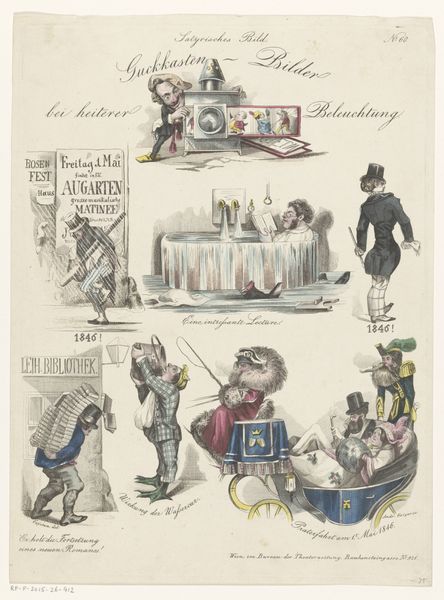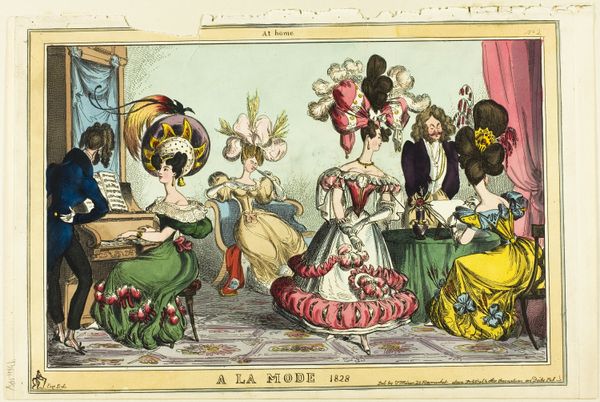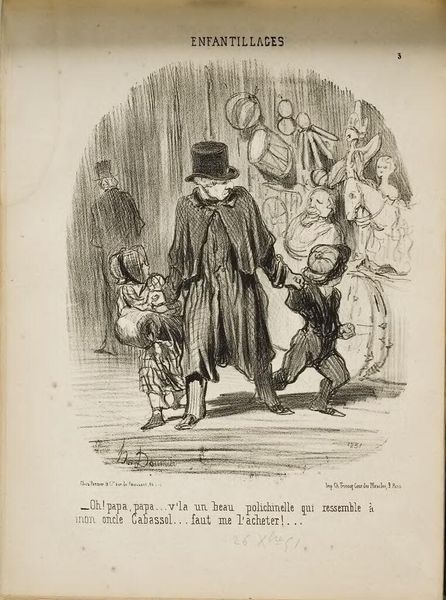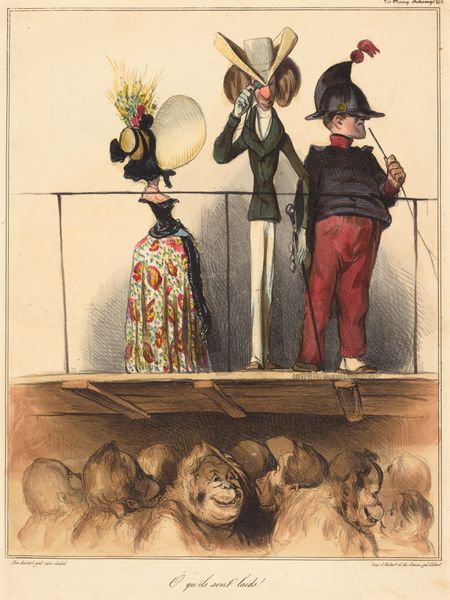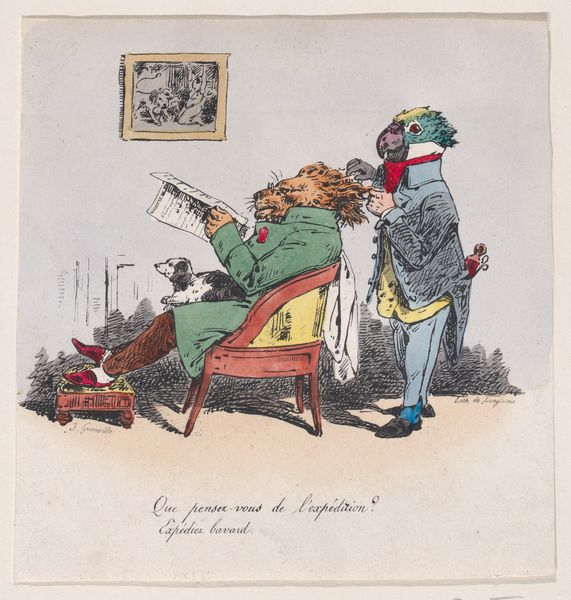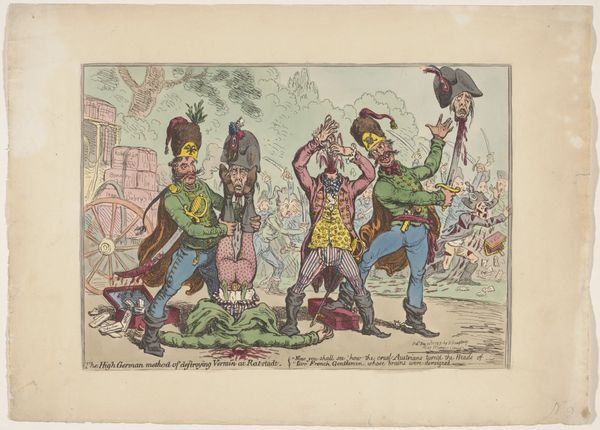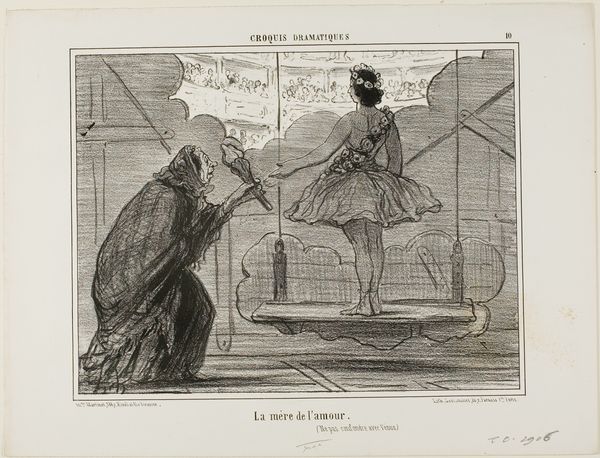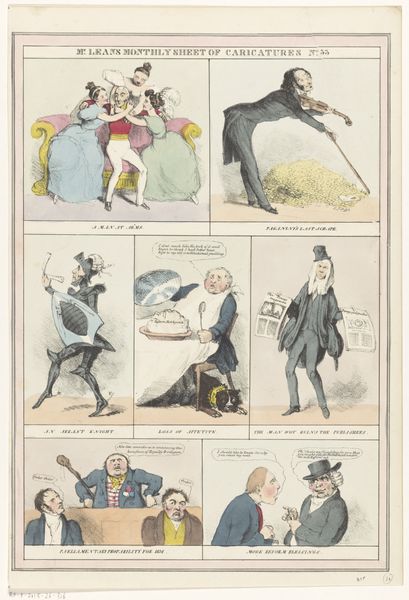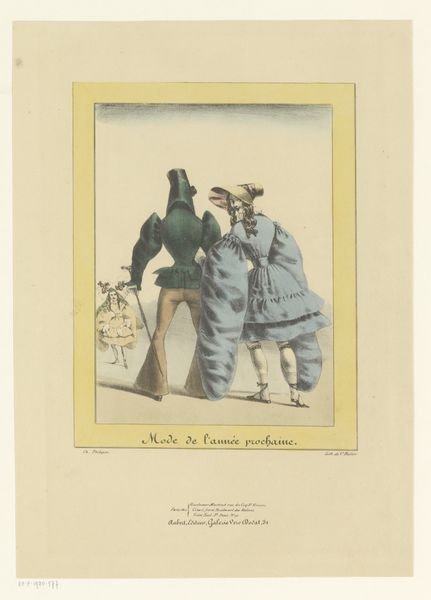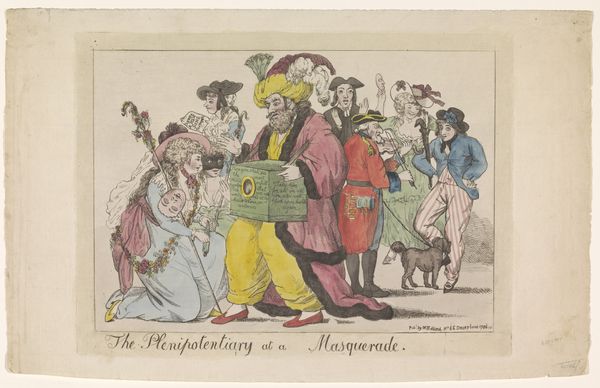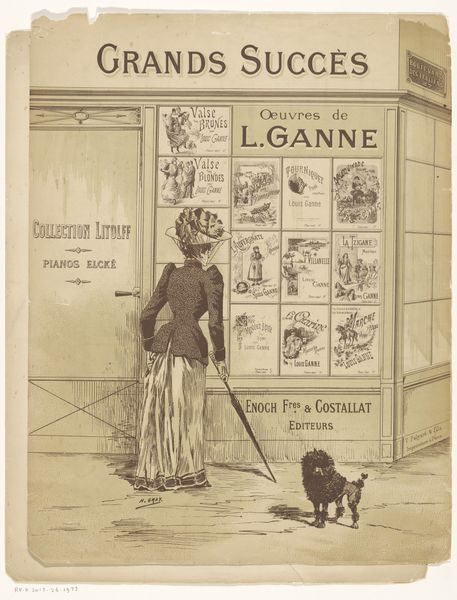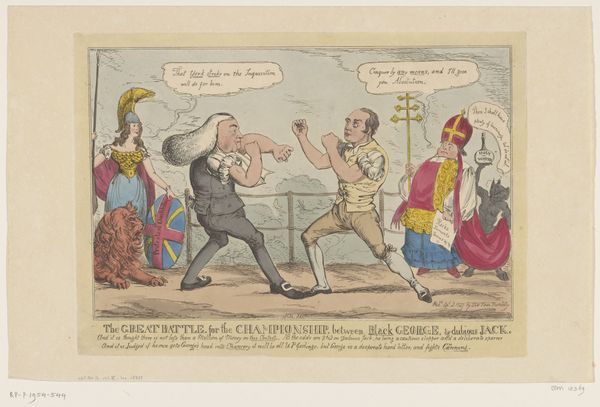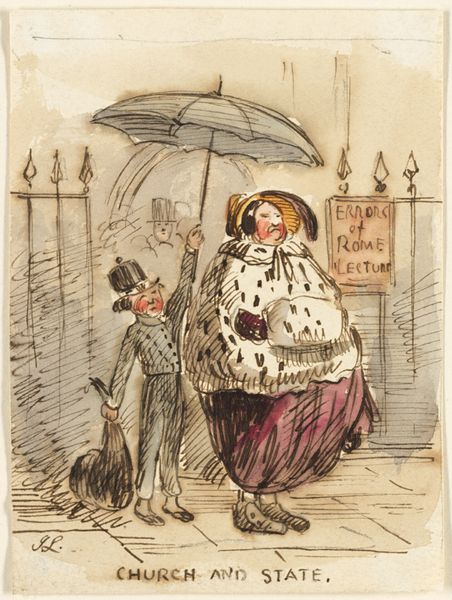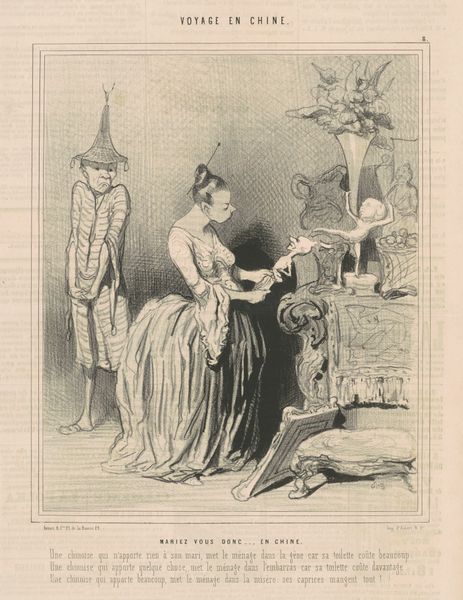
Title Page- Les Metamorphoses- Du Jour- par Grandville 1829
0:00
0:00
lithograph, print
#
lithograph
# print
#
caricature
#
romanticism
#
france
Dimensions: 8 1/2 x 5 1/2 in. (21.59 x 13.97 cm) (image)
Copyright: Public Domain
Editor: Here we have "Title Page - Les Metamorphoses du Jour - par Grandville," a lithograph from 1829 by Jean Ignace Isidore Gérard Grandville. The animal-headed figures feel like a strange, slightly unsettling fairytale. What kind of statement do you think Grandville was trying to make with this? Curator: This is an excellent example of Grandville's work; he masterfully utilizes animal symbolism to critique human behavior. Notice how "Metamorphoses" itself is depicted with little human figures contorting into the letters. What might that suggest about the nature of transformation? Editor: That makes me think of people being forced into roles or changing to fit societal expectations... is that what you mean? Curator: Precisely. Consider the monkey in a top hat or the fish with the cravat; they represent familiar social types, perhaps mocking the bourgeoisie of the time. Animal heads were commonly used in caricatures and conveyed specific stereotypes at the time. Are there any animals you recognize and what characteristics might those animals represent in this specific historical moment? Editor: Not immediately, I would need to research. But that sounds very interesting! Now that you point it out, the expressions feel deliberately absurd. I’d never have noticed without your insights on animal symbolism and the cultural context of the period! Curator: Symbolism operates on layers of cultural memory. Appreciating these layers provides a deeper connection with the artwork, giving meaning not just to what the artist literally depicts, but to what they culturally encode. Editor: That's so fascinating; I'll definitely be looking into the common symbolism of different animals from that era.
Comments
No comments
Be the first to comment and join the conversation on the ultimate creative platform.
